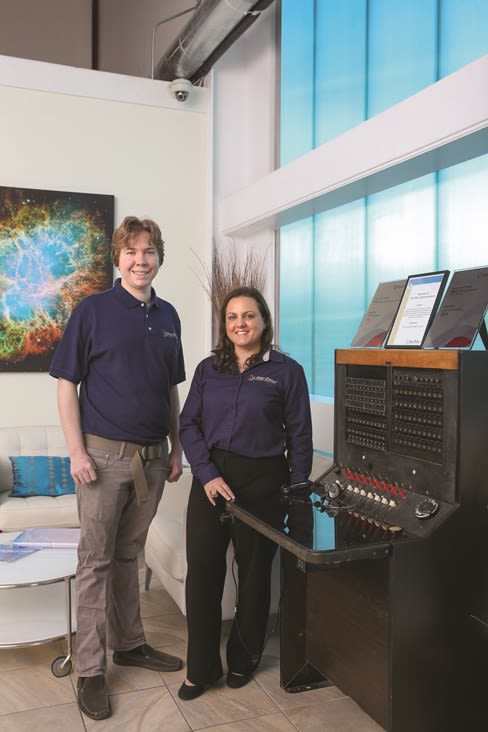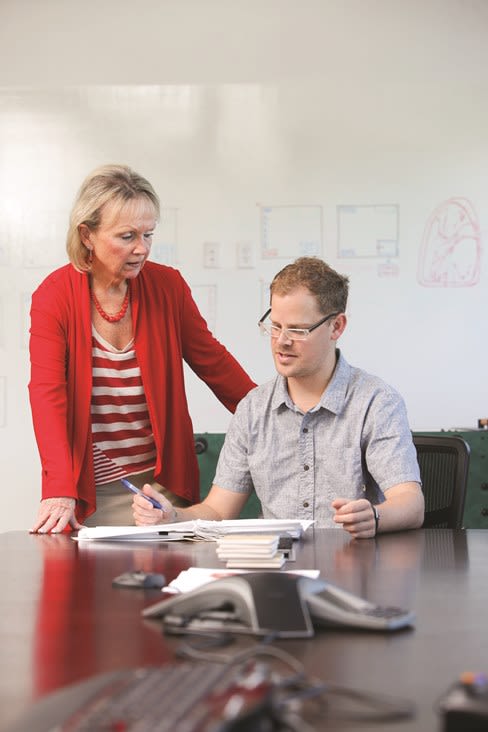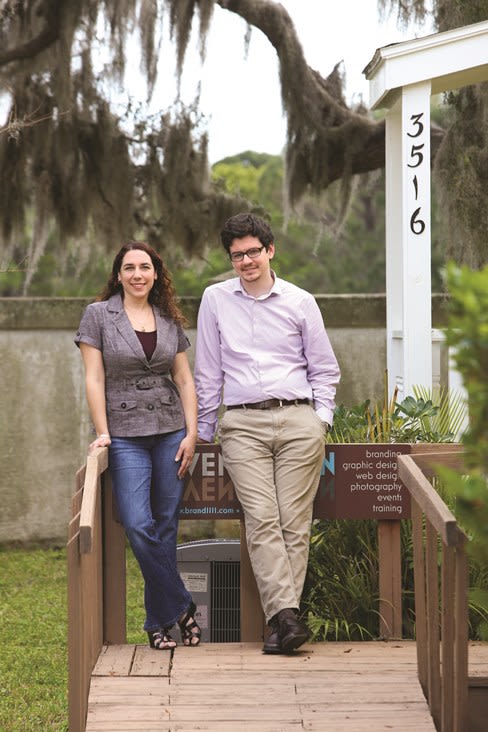How to Harness the Energy of Students
A 2014 survey by the National Association of Colleges and Employers showed that nearly 97 percent of responding employers planned to offer internships. But as widespread as they are, internships have come under increased scrutiny concerning fair compensation. The research firm Intern Bridge reports that about half of the more than 1 million undergraduate interns in the U.S. were unpaid in 2013. That year, a federal judge ruled that two unpaid interns working on the film, Black Swan, should have been paid. It was the first of a series of high-profile lawsuits filed by unpaid interns across the entertainment industry.
That’s changed the way many firms think about interns. Rather than serving as a free source of low-level labor, interns must receive supervised training in work that benefits them, not just the employer. And most companies are choosing to compensate them. Nearly 98 percent of the employers responding to the National Association of Colleges and Employers survey said their internships would be paid in 2014. While the costs of employing interns are increasing, the benefits remain significant. Many companies use internship programs as recruiting tools. In the same 2014 study, employers made full-time offers to 65 percent of their interns. Of those offers, 79 percent accepted.
Three companies working with local colleges shared how they have used interns to bring fresh perspectives and energy to their businesses.
THE GOING WAGE
$15.05
The average hourly wage for college freshman interns in the U.S.
SOURCE: National Association of Colleges and Employers

Star2Star’s Michelle Accardi-Peterson with former intern and now Star2Star core engineer Jack Rogers.
“The students we choose are highly ambitious and they give us new, creative thought and energy.”
EMPLOYEES: 310
INTERNS IN 2014: 7 (will double in 2015)
SOURCES: New College of Florida and University of South Florida, Sarasota-Manatee
PAID: Yes
STAR2STAR COMMUNICATIONS HAS BECOME ONE OF THE MOST COMPETITIVE INTERNSHIP PROGRAMS for local college students in the STEM fields of science, technology, engineering and math. Hundreds of students applied for seven paid intern positions at the telecommunications company last year, and the company will offer twice as many spots this year. Most interns come from New College (Star2Star CEO Norm Worthington is a New College grad) and University of South Florida, Sarasota-Manatee. Potential interns have to submit resumes and interview with department heads and recruiting staff.
“The students we choose are highly ambitious and they give us new, creative thought and energy,” chief marketing officer Michelle Accardi-Peterson says. “[It’s] very affordable for us, but it is also giving the interns an incredible value.”
“I was in a privileged position working with a team that is very much the best and brightest they have to offer,” says Jack Rogers, a New College graduate who interned in 2013 and is now a Star2Star employee. “I was able to constantly ask questions and get a lot of one-on-one help.”
Last year, graphic design students helped to rebrand company products in the marketing department, while legal interns worked on contracts with customers and partners. That’s in addition to the tech students who worked with the telephone and server systems that make up the backbone of Star2Star’s business.
“If you’re going to bring kids in to make copies, get a Kelly Services temp,” Accardi-Peterson says. “You are squandering the opportunity these young people bring.”

BioLucid’s Liz Grasso with former intern Clay Cundiff, now an artist with the company.
EMPLOYEES: 24
INTERNS IN 2014: 2
SOURCE: Ringling College of
Art and Design
PAID: Yes
SARASOTA DIGITAL MEDICAL IMAGING AND COMMUNICATION FIRM BIOLUCID’S INTERNSHIP PROGRAM began about three years ago under company co-founder and CTO Jeff Hazelton, who was an adjunct faculty member at Ringing College. Hazelton saw that the college’s graphic design students could complement the interactive medical applications being produced by his company.
Today BioLucid offers between two and four internships during the summer when students usually have a more flexible class schedule and BioLucid employees have more time for mentorship, says director of human resources and administration Liz Grasso.
“The worst thing to do is bring in too many interns and not give them that one-on-one mentoring that’s needed,” Grasso says. “You also don’t want to overextend your own employees because you want your interns to have a good experience.”
Finding the right interns is also paramount, Grasso says: “We make sure to choose our interns as carefully as we choose our permanent employees.”
Grasso says Ringling students’ varied backgrounds, such as in concept art or graphic design, bring fresh thinking to BioLucid’s design studio. BioLucid has hired more than a dozen former Ringling graduates, two of them former interns.
Former intern Clay Cundiff designed icons and virtual buttons for a BioLucid application called The Living Lungs and then worked on animation for an application showing the effects of prostate cancer. “After working there I had a better understanding of how I can make my animations more interactive,” Cundiff says.
“You need buy-in [for an intern program],” Grasso says. “Senior managers and individual employees are the ones who are actually going to work with the interns.”

Brand Eleven Eleven’s Melissa Link with her company’s web developer Johnathan Weller, a former intern.
EMPLOYEES: 5
INTERNS IN 2014: 3
SOURCES: State College of Florida, Ringling College of Art and Design, Fitchburg State University, Mass., and North Port High School
PAID: No
MELISSA LINK, OWNER OF SARASOTA-BASED GRAPHIC DESIGN COMPANY BRAND ELEVEN ELEVEN, has two goals for her interns: that they experience working in a real graphic design studio, and leave with a portfolio full of resume-building clips. “They work on real projects from paying clients, and that can set them apart later in school or when they look for a job,” she says.
Every semester the company has one or two interns from local graphic design programs at State College of Florida and Ringling College of Art and Design, and even as far away as Fitchburg State University in Massachusetts.
Interns are usually unpaid since they also receive grades from their schools and the designs they produce are reviewed back at their schools, Link says. Some students, however, are later hired as contractors, and a few have been hired as full-time employees.
State College graduate Johnathan Weller was an intern before being hired as Brand Eleven Eleven’s web developer and internship program coordinator.
“The people there want you to know as many skills as possible, and it added to the opportunity for me,” Weller says.
Link and her staff devote attention to ensuring each intern is meeting his or her academic and vocational goals.
“We had one intern who had never had a job before,” Link says. “So not only were we teaching about real-world design, but we were teaching about normal work stuff.” Link appreciates not only the fresh ideas interns bring, but the way the program works as a recruiting tool. It’s essentially a semester-long interview, she says. ■
TO PAY OR NOT TO PAY?
According to the U.S. Department of Labor, an internship can be unpaid if it meets all six of the following criteria:
+ The internship is similar to training that would be given in a vocational school.
+ The internship experience is for the benefit of the student.
+ The intern does not displace regular employees, but works under the close observation of a regular employee.
+ The employer provides the training and derives no immediate advantage from the activities of the intern. Occasionally, the operations may actually be impeded.
+ The intern is not necessarily entitled to a job at the conclusion of the internship.
+ The employer and the intern understand that the intern is not entitled to wages.
10 BEST INTERNSHIP PRACTICES
1. ASSIGN REAL WORK Menial tasks like making copies and answering phones don’t provide educational benefit and they waste interns’ true value to a business. Carefully consider intern pay; there can be legal issues if an unpaid intern is given real work that benefits the company.
2. CONDUCT ORIENTATIONS Managers, mentors and interns should start with the same goals and expectations.
3. PROVIDE A HANDBOOK OR WEBSITE A written guide of company and intern program policies and frequently asked questions can solve many issues before they arise.
4. OFFER SCHOLARSHIPS If the internship is unpaid, scholarships can help recruit a wider range of students, especially useful if the business is looking for interns with specific skill sets.
5. MAKE WORK SCHEDULES FLEXIBLE Students’ schedules vary wildly with classes, university activities and other jobs.
6. HAVE AN INTERN MANAGER A dedicated person overseeing the program is always beneficial.
7. INVOLVE THE TEAM Make sure all employees working with interns understand their role in the mentoring process.
8. INVITE COLLEGE FACULTY TO VISIT This can build better relationships with college career center staff, which can lead to more student referrals and enhanced visibility for the company on campus.
9. SHOWCASE INTERN WORK Setting up venues for presentations allows students to demonstrate their achievements and receive some recognition.
10. CONDUCT EXIT INTERVIEWS This is a great way to gather feedback on the students’ experiences and their interest in returning or possibly being hired. An exit survey also gives some structure to the experience.
SOURCE: National Association of Colleges and Employers